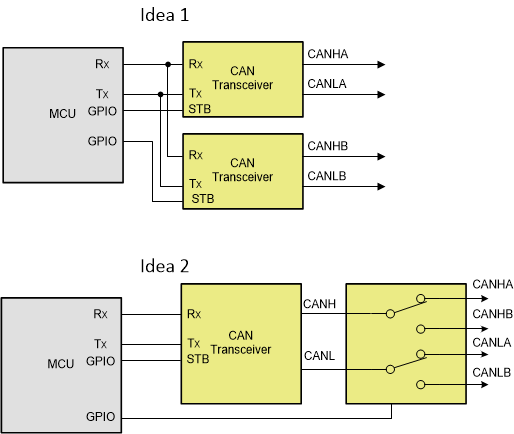Other Parts Discussed in Thread: THVD1500, SN65HVD1780-Q1
Hi,
In my customer's application, there is only one UART port available on processor and the signal will be translated to CAN physical layer by TCAN1042-Q1. But there will be two different types of slavers with different protocol connected to this CAN physical layer. Because two protocol may have contentions, it is under consideration to use CAN transceivers to separate the interface physically. Do you think it is possible to use two pieces of TCAN1042-Q1 to separate the interface from processor physically? Or do you have other single product solution to achieve same function such as a multiplex for one input for Rx, Tx and two selectable CAN output. Thank you.
Best regards,
Xianghao


